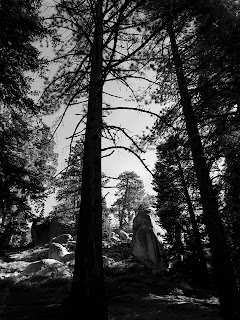Kayaking on the Los Angeles River
By Armando Ortiz
Have you ever floated down the Los Angeles river, catching sight of the traffic on the 110 freeway from within the shadow of a willow tree? Kayaking the Los Angeles River was a unique and memorable experience that exceeded my expectations. A few years back, I had come across an article or news segment on how kayaking was now a possibility on the L.A. River. Kayaking on any body of water was not on my itinerary until recently so I decided to give it a try. With a camping trip to Yellowstone and Grand Teton National Parks on the horizon, I wanted to gain some practice and training in kayaking so that could be a possible option on the lakes over there. That’s when I discovered the LA River Kayak Safari, which offered local kayaking tours, classes and activities on the river. Last year’s unprecedented rain falls really made me decide to follow through and sign up for one of their excursions.
The LA river, which originates from the northwestern edge of the Angeles National Forest, the Simi Hills and Santa Susana mountain. There are other areas that would drain into the Los Angeles River. According to the owner of the company, Mt Washington and the surrounding hills also contributed as a water source to the river. The areas along the river were peppered by Tongva villages, Native American tribes, by the time the Spanish missionaries began exploring the areas. The river was a vital water source for the Tongva, providing food like fish and nuts from trees, shelter from from young willow trees and tule whose branches and reeds made up the frames of their dwellings, and resources for tools, like grinding stones, and the raw materials necessary for basket making were found along the river. Exploring the river allowed me to appreciate the historical and cultural significance of this natural waterway. It also combined what I’ve learned in books and articles with a hands-on activity that puts me in an outdoor setting.
Our kayaking adventure began at Oso Park, where we met our guides and completed the necessary paperwork. We then chose bikes to ride to the staging area, which was located about two to three miles north along the river. This unique mode of transportation added an extra element of anticipation to the experience. It was also my first time riding along the Los Angeles river and the weather was perfect. At the staging area we were given a brief lecture on the Los Angeles river, and ancient villages that once existed in the area, as well as information on the local frog population that continues to endure, and when the river began to be contained within concrete walls and channels. Afterwards, we were given paddles and instructed on how to handle the paddles, basic movements to turn left and right, and ways to turn once in the water, after which we strapped on life vests and were ready for the adventure.
Once on the river, I was immediately captivated by the serene beauty of the surrounding. Native plants create a green cover, along with oaks and willow trees giving an occasional respite from the sun. The LA River is home to a variety of birds, which include white egrets and blue herons which stand elegantly and more like kabuki dancers along the water. A black necked stilt greeted me along the way as their sounds broke the solitary silence that was experienced at times. The occasional sight of fish jumping out of the water added to the sense of nature’s enduring presence. Being my first time kayaking, I focused on trying to paddle correctly and to be in sync with the pace of the group, but also took moments to appreciate the wildlife and scenery around me. Ducks, geese, other waterfowl added to the vibrant life of the river’s ecosystem making any signs of city life a distant backdrop.
In conclusion, kayaking the Los Angeles River was an excursion that provided both a recreational activity and a deeper connection to nature. It offered a glimpse into the historical and cultural significance of the river, as well as a chance to appreciate the diverse birdlife that is hardly ever noticed, and natural beauty it harbors. The LA River Kayak Safari provided excellent instruction and guidance through the trip, making it accessible even for a newbie like myself. Along the way, I received tips on maintaining balance in fast currents and was reminded of the proper way to hold the paddle. As I paddled along the river, there was a profound sense of peace and tranquility, moving with the flow and discovering my rhythm. The gentle sway of the willow trees, and the graceful presence of egrets and herons all contributed to a feeling of harmony and deep satisfaction. Kayaking the LA River was more than an adventure and a safari; it was an opportunity to disconnect from the bustling city life and immerse myself in the natural wonder that our city has to offer. I highly recommend this experience to anyone looking to explore a unique aspect of Los Angeles and immerse themselves in an outdoor adventure and make a connection to our natural environment.






